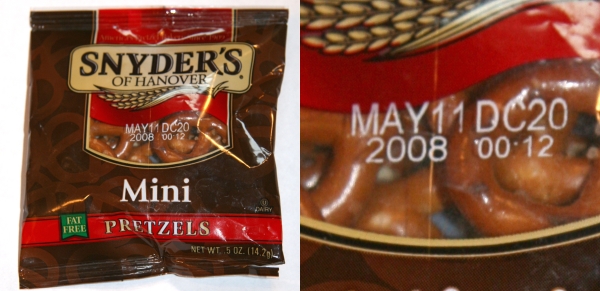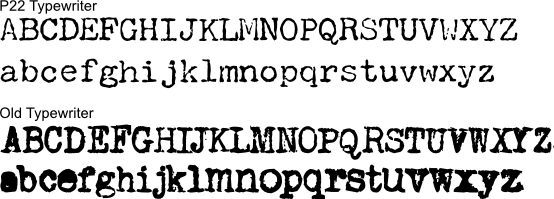Here is a photograph (and a closeup) of a bag of pretzels I was given on a cross-country plane trip today.

When I first saw “May 11 DC20 2008 00:12,” I thought, “Wow! That’s an extremely precise expiration date!” In transit over several time zones I then thought, what time zone do they mean?
Of course, expiration dates are ballpark figures that mark thresholds in the gradual process of product degradation. They are arbitrary, of course. It’s not as if these pretzels will be great on May 10th and inedible two days later. Unless the pretzels have been set to self-destruct, the addition of an expiration hour and an expiration minute seems, well, unnecessary.
What’s happened here is a design error. The label is, in fact, two different types of data printed in two separate columns. “May 11 2008” is the expiration date. “DC20 00:12” is the number of the machine or production line that produced the bag and the time at which the pretzels were made. Taken together, the information can be used by the producer, Synder’s of Hanover, for quality control purposes to find out what machines, workers, and batches of supplies produced a particular bag of pretzels. In all likelihood, Snyder’s prints these labels with a system that, for cost reasons, tries to minimize the amount of printed area on each bag.
For Snyder’s employees familiar with the system, the labels are completely clear. But those of us not familiar with the system are left confused. Error can be thought of as the chasm between user expectations and technical interaction. Like most of the errors I discuss here, this flub represents failed communication and reveals the mediating technologies.


